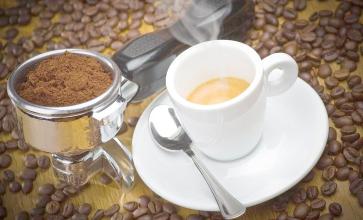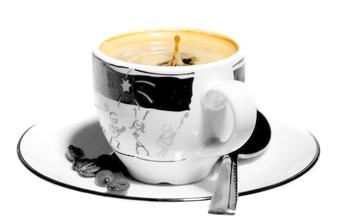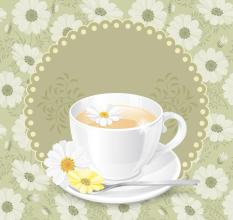Introduction to the production area of Yunnan Coffee Bean suitable for Seafood Chong planting Environment
Introduction to the production area of Yunnan Coffee Bean suitable for Seafood Chong planting Environment
1) an appropriate amount of pure water; pure water or filtered tap water used in household drinking fountains can be used.
2) some coffee beans / coffee powder
The amount of water in a cup of coffee in a siphon pot is 110ml (but it will be reduced by about 1/5 after brewing), and the corresponding coffee powder is about 15g.
If the conditions are right, it is best to choose coffee beans within 10 days from the factory and grind them into coffee powder before brewing coffee.
The fineness of coffee powder can refer to the thickness of "ultra-fine granulated" sugar sold in the market.
3) A set of siphon coffee maker (Hario TCA- 3 is used here), including: upper cover, upper seat, lower seat, siphon pot bracket, filter, alcohol lamp (using 95% industrial alcohol) and alcohol lamp windshield. Because the firepower of the alcohol lamp is difficult to adjust during use, it is necessary to turn it down (the cotton core only needs to leak slightly from the top 2mm to 3mm).
4) one spoon for 10 grams of coffee
5) stir the bamboo stick.
6) A piece of filter cloth or filter paper used in the siphon pot; the filter cloth should be ironed with hot water before being used for the first time to remove the odor.
7) A damp rag
8) A pointer clock for timing
Specific cooking steps:
1) add an appropriate amount of pure water to the lower seat of the siphon kettle (heated pure water can be used to shorten the time of boiling water. In this operation, the amount of water added is 2.5 cups, that is, about 280 milliliters, two cups of water is for guests / friends, and the extra half cup is for the brewers to taste in advance. If the taste is abnormal at that time, do not give it to the guests, hehe)
2) when there is enough fuel in the alcohol lamp, ignite it and place it directly under the lower seat of the siphon kettle.
3) fix the filter with filter cloth / filter paper on the upper seat of the siphon kettle and make sure that the position of the filter is in the center (if the position is off, it can be adjusted with a bamboo stirring rod)
4) pour the right amount of coffee powder (2.5 cups of water corresponds to about 37 grams of coffee powder, which can be adjusted according to your taste) into the upper seat of the siphon pot. Shake the upper seat horizontally so that the coffee powder is evenly covered with the filter
5) insert the upper seat of the siphon pot obliquely into the lower seat, but not tightly (if the upper seat is inserted after the water is boiled, boiling hot water may suddenly erupt, which is quite dangerous, remember!)
6) when the water in the lower seat is boiling completely, move the alcohol lamp away for about 10 seconds, then move it back, but do not put it directly under the lower seat, it should be slightly off the center. This has two purposes: one is to reduce the water temperature to about 95 degrees, and the other is to reduce the firepower of alcohol lamps (as mentioned earlier, alcohol lamps are not very convenient in adjusting firepower. This is also the reason why some people rotate to use two alcohol lamps or gas stoves with adjustable firepower)

Important Notice :
前街咖啡 FrontStreet Coffee has moved to new addredd:
FrontStreet Coffee Address: 315,Donghua East Road,GuangZhou
Tel:020 38364473
- Prev

Description of the characteristics and Flavor of Yejiaxuefei Coffee introduction to the varieties treated in the area of manor production
Yega Chuefei Coffee characteristic Flavor description Taste Manor Regional treatment Variety introduction Yega Xuefei's coffee trees were planted by monks in Europe (a bit like Belgian monks growing wheat to brew beer) and were later transferred to farmers or cooperatives. Yega Xuefei is actually constructed by surrounding coffee communities or cooperatives, including Edido Idid near Fog Valley Misty valley.
- Next

Introduction to the regional treatment method of taste production in BISHAN flavor description of hambela Manor in Ethiopia
Introduction to the Regional treatment method of BISHAN Flavor description of hambela Manor in Ethiopia in Ethiopia, the grading and quality control system of coffee is divided into three levels: producer, regional and national. All coffee is inspected by local inspection agencies before leaving the country of origin, and then re-inspected at the coffee inspection and grading centers in Addis and Diredawa to determine its quality, etc.
Related
- Detailed explanation of Jadeite planting Land in Panamanian Jadeite Manor introduction to the grading system of Jadeite competitive bidding, Red bid, Green bid and Rose Summer
- Story of Coffee planting in Brenka region of Costa Rica Stonehenge Manor anaerobic heavy honey treatment of flavor mouth
- What's on the barrel of Blue Mountain Coffee beans?
- Can American coffee also pull flowers? How to use hot American style to pull out a good-looking pattern?
- Can you make a cold extract with coffee beans? What is the right proportion for cold-extracted coffee formula?
- Indonesian PWN Gold Mandrine Coffee Origin Features Flavor How to Chong? Mandolin coffee is American.
- A brief introduction to the flavor characteristics of Brazilian yellow bourbon coffee beans
- What is the effect of different water quality on the flavor of cold-extracted coffee? What kind of water is best for brewing coffee?
- Why do you think of Rose Summer whenever you mention Panamanian coffee?
- Introduction to the characteristics of authentic blue mountain coffee bean producing areas? What is the CIB Coffee Authority in Jamaica?

